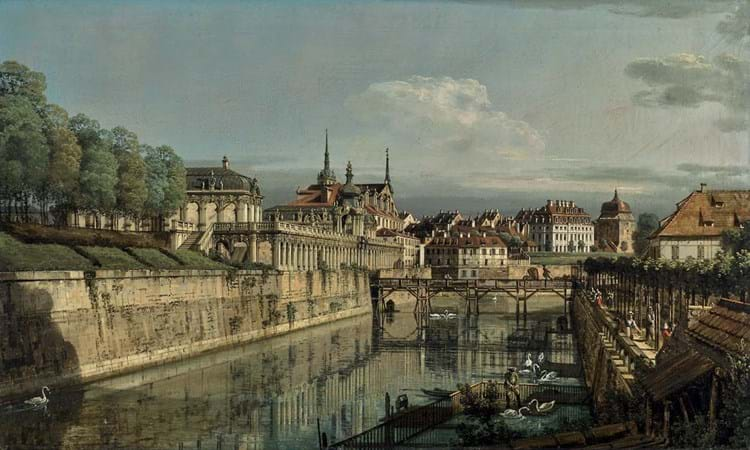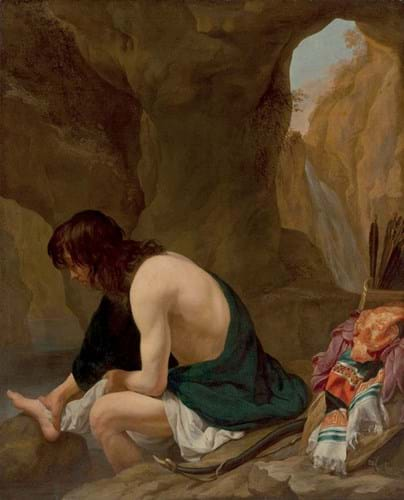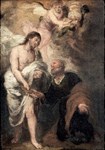The summer 2020 auction season has been unlike any other.
For the Old Master scene in London this was certainly the case. The usual sales series, which would normally take place over the course of a week in early July, did not happen as such due to the impact of the coronavirus on the calendar.
At Sotheby’s and Christie’s some works appeared in online sales, keeping a steady flow of goods bought and sold over the course of the summer. However, the prime offerings were held back until late July when, at the tail-end of a long and drawn-out season, they finally came to auction as part of mixed-category sales.
Christie’s (25/20/13.5% buyer’s premium) held a Classic Art evening sale in London on July 29 with its leading Old Masters offered alongside sculptures, antiquities and illuminated manuscripts.
Sotheby’s (25/20/13.9% buyer’s premium) placed its Old Masters alongside pieces of Modern and Contemporary art in a sale titled Rembrandt to Richter held the night before.
These shifts in the calendar make it difficult to make a like-for-like comparison with previous years in terms of the overall totals for Old Masters sold this summer. But it would seem that, while the volume of works sold inevitably fell as some potential vendors held back, the percentage of the drop was less severe than many other sectors.
Indeed, the Old Masters sector has experienced some lively action on occasion this summer and evidence exists that prices and market performance have not dipped in the way that might have been expected.
While Sotheby’s sale was led by a £12.6m Rembrandt and Christie’s auction was topped by £3.4m Rubens (see News, No ATG 2453), a number of other notable highlights indicated the demand that will emerge for the ‘right’ material.
Restituted view of Dresden
Market-fresh consignments provide a boost to any Old Master sale and the whole area of restitutions has become a well-tapped source for the supply of such works.
Appearing at Sotheby’s was a view of Dresden painted by Bernardo Bellotto (1721-80), the Venetian artist who was the nephew of Canaletto (1697-1768). This work was recently restored to the family of its original Jewish owner, the retail magnate and art collector Max Emden.
Emden was a colourful character who was described by Sotheby’s as a “successful and exuberant businessman whose collection was once the envy of Europe”.
A founder of Berlin’s KaDeWe department store (which expanded to Italy, Hungary and Scandinavia), Emden acquired the two Brissago Islands in the Swiss sector of Lake Maggiore, building a house in classical style where he held exotic parties. As a committed naturist, he encouraged like-minded guests to water-ski and dance naked in the garden.
He also owned works by artists such as Monet, van Gogh and Renoir. Within two years of the Nazis coming to power in Germany, however, his businesses, properties and assets, including much of his art collection, was seized.
In June 1938, art dealer Anna Caspari arranged the sale of two Bellotto paintings belonging to Emden – including the view of Dresden – to Karl Haberstock, another dealer who was supplying artworks to Hitler for the planned Führermuseum in Linz.
Emden died in 1940 but, after the Second World War, the Dresden painting entered the German federal government collection and was hung from the 1960s onward in the residence of successive German presidents in Bonn for many decades thereafter. Having been returned last year by the German government to Emden’s heirs, it was consigned to Sotheby’s and estimated at £3m-4m.
The work from c.1758 shows the moat of the Zwinger, a palatial Baroque complex in Dresden which is probably the city’s most famous building. The 19in x 2ft 8in (48 x 80cm) oil on canvas relates to a larger painting for which Bellotto was commissioned by Augustus III (1696- 1763), son of the Elector of Saxony.
While etchings of Bellotto’s views of Dresden appear occasionally on the market, the last oil painting of the German city to emerge was back at Sotheby’s New York in January 1994 – a view of the collapsed tower of St Croix that made $675,000 (£452,990).
Here, the painting generated a good bidding battle and was knocked down at £4.6m – price that stands third highest on the list of auction prices for the artist, behind a pair of works depicting Rome and another of the Venice (source: Artprice by Artmarket).
An even more intense competition at Sotheby’s came for another picture that had also been the subject of a restitution claim.
The extremely rare and striking depiction of a battle scene on a riverbank by Florentine painter and polymath Paolo Uccello (c.1397- 1475) had previously been owned by Dutch banker Fritz Gutmann, whose entire collection was removed weeks after the Nazis invaded the Netherlands. He later died in Theresienstadt concentration camp.
This work had been subject to a forced sale in 1942 and then also passed through Haberstock. Although for many years after the war it was considered lost, it emerged later that it had actually ended up in Italy. It came to Sotheby’s following a settlement between the Italian owner, whose grandfather had acquired it in 1958, and the Gutmann heirs.
The 17in x 5ft 4in (43cm x 1.62m) tempera and gold on panel was billed as “a major rediscovery by one of the most innovative painters of the Italian Renaissance”. It was undoubtedly a museum-quality work and the Yale art historian Laurence B Kanter suggested it was probably Uccello’s masterpiece of cassone painting – works painted to decorate the sides of large wooden chests often kept next to the marriage bed.
The only previous records for Uccello at auction were a few Madonna and Child altarpieces and a painting of St Monica that made €1.37m (£848,000) at Finarte in Italy in November 2001.
The panel here depicted two opposing armies clashing on the banks of a winding river. Although the scene was rather dazzling in its early Renaissance magnificence, the subject was thought to be a scene from antiquity – most likely the ancient battle of the Metaurus (207BC) between Rome and Carthage.
The estimate of £600,000-800,000 was not deemed excessive for the first work of its kind by the artist to appear at auction and also for a painting as intricately detailed and dramatic as this. It was eventually sold on the phone at £2m with Sotheby’s saying that it drew “bidding from specialists in every category” and was reportedly underbid by a contemporary art collector.
Enigmatic portrait
Among the Old Masters bringing the most demand at Christie’s Classic Art sale was a small but enigmatic portrait of a man holding a prayer book.
The fact that it came to auction from a ‘noble’ collection with an illustrious provenance means it can hardly be described as a ‘discovery’, but new information about the work and its attribution has emerged recently.
The 11.5 x 8.5in (29 x 22cm) oil on panel depicted the subject in a fur-lined coat and cap and had some similarities in terms of style and technique to known works by Quentin Massys (1466-1530), to whom it was traditionally attributed, and also Rogier van der Weyden (1400-64).
However a re-assessment undertaken within the last year pointed to certain features matching a portrait in the Woëlmont collection at Ammersoyen Castle in the Netherlands which itself has never been identified but has historically been attributed to an anonymous but highly talented French or Burgundian master active between c.1480-1500.
This was based on dendrochronological analysis (which dated the panel to c.1459), as well as its style, compositional format and the treatment of the sitter’s face and costume. This led to it being catalogued as ‘Burgundian Master, c.1480’ and estimated at £400,000- 600,000.
The painting was once owned by Sir Robert Walpole whose prodigious collection was inherited by his son Horace. It was later acquired by the Earl of Derby (1775–1851) and passed down to the current vendor by descent.
On the day, it drew strenuous competition and was knocked down at £1.35m.
Elsewhere at the sale, a painting set an auction record for the Dutch Caravaggist painter Gerard van der Kuijl (1604-73).
Philoctetes on Lemnos was a 4ft 6in x 3ft 8in (1.38 x 1.11m) oil on canvas from 1647 which came to auction from the collection of art historian Luisa Vertova who acquired it in the 1960s. It was estimated at £70,000- 100,000.
Not many known works by the artist have emerged at auction before, especially ones that are dated and signed with van der Kuijl’s monogram as was the case here.
The artist is believed to have trained under Gerrit van Honthorst but the subject here was an unusual depiction of a figure in stoic isolation. In Greek legend, Philoctetes was one of Helen’s unsuccessful suitors but on the voyage to Troy he was bitten on his foot by a snake and he remained on Lemnos in the Aegean Sea suffering terrible pain and loneliness – perhaps making it an appropriate memento of a more recent lockdown.
After decent bidding, it eventually sold at £240,000.


















